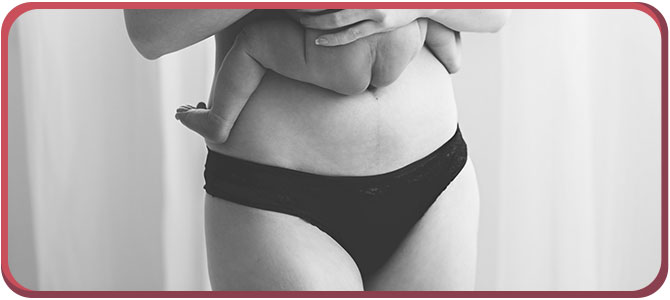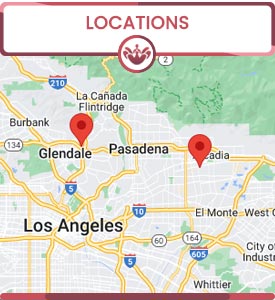Postpartum Pelvic Floor Dysfunction Specialist in Arcadia, CA, and Glendale, CA
You can experience postpartum pelvic floor dysfunction after giving birth, a traumatic injury in the pelvic region, overuse of the pelvic floor muscles, surgery in the pelvic region, extra weight, or aging. Meet Dr. Prema Kothandaraman at The OB-Gyn and Incontinence Center and resolve your postpartum issues. For further information, and guidance contact us or book an appointment online. You can also visit our clinics in Arcadia, CA, and Glendale, CA.




Table of Contents:
Does pelvic floor dysfunction go away after pregnancy?
How long does it take for pelvic floor dysfunction to go away?
How do I fix my pelvic floor muscles after pregnancy?
How common is pelvic floor dysfunction?
Pelvic floor dysfunction is a condition where you’re unable to relax and coordinate your pelvic floor muscles properly for various functions. Many people experience this condition after giving birth. You can learn more about postpartum pelvic floor dysfunction and how to treat it below!
Pelvic floor dysfunction can go away after pregnancy. Still, it’s important to seek help for restoring pelvic floor function after pregnancy. Pelvic floor dysfunction is more likely to go away sooner if you seek therapy for restoring your pelvic floor function than if you wait for it to improve on its own. In most cases, pain and discomfort from pelvic floor dysfunction will stay or worsen if it is not treated.
Therapy for pelvic floor dysfunction will help the muscles around your bladder, vagina, and buttocks regain strength for proper function through various stretches and exercises. The pelvic floor strength you gain from therapy will help you recover faster and improve your overall pelvic floor health. Thus, pelvic floor therapy will also help in preventing future pelvic floor issues as you get older.
For many mothers, pelvic floor dysfunction can go away within a couple of months of pregnancy, especially when they seek therapy and find success with it. Still, some individuals may experience pelvic issues for months or years after giving birth. It is also possible for individuals to experience pelvic organ prolapse symptoms several years after childbirth.
Pregnancy and childbirth put significant strain on your pelvic floor muscles, so it is not uncommon for pelvic floor dysfunction to cause problems for extended periods after giving birth. Some of these problems may include:
● Frequent need to use the toilet
● Difficulty urinating or having bowel movements, such as straining or stopping and starting several times
● Urine or feces leakage
● Painful sensations when urinating
● Unexplained pain in your lower back
● Ongoing pain in your genitals, pelvic region, or rectum
● Pain during sexual intercourse
To fix pelvic floor muscles after pregnancy, there are several exercises you can perform that restore strength to your bladder, vaginal, and buttocks muscles. These exercises are simple enough that you can perform them anywhere in virtually any position, whether you’re sitting, standing, or lying down, at home or in the office.
Here is one type of exercise you can perform anywhere to strengthen your pelvic floor muscles:
1. Contract the muscles around your anus and vagina as though you are attempting to prevent yourself from urinating.
2. Continue squeezing those muscles for at least eight seconds, and then relax for another eight seconds. If you’re unable to hold for eight seconds, try to hold for as long as you’re able to.
3. Repeat this exercise eight to ten times for one set and try to do three sets every day.
4. As you perform this exercise, focus on your breathing and keep your thighs and buttocks muscles relaxed.
In addition to this exercise, some other ways you can fix your pelvic floor muscles after pregnancy and childbirth include:
● Biofeedback
● Pelvic floor physical therapy
● Medications for optimizing bowel movements
● Relaxation techniques, such as meditation, yoga, acupuncture, or warm baths
Pelvic floor dysfunction is a highly common condition. In fact, studies show that one in three women will experience some sort of pelvic floor dysfunction in their lifetime. The most common reason for pelvic floor dysfunction in women is pregnancy and childbirth. However, there are other causes of pelvic floor dysfunction, and it can also affect men. Some other causes of pelvic floor dysfunction include:
● Traumatic injuries in the pelvic region
● Overuse of the pelvic floor muscles
● Surgery in the pelvic region
● Extra weight
● Aging
If you’re experiencing postpartum pelvic floor dysfunction, the best plan is to see a specialist who can help you strengthen your muscles. At The OB-GYN and Incontinence Center, our obstetrician-gynecologists can provide excellent care for any pelvic floor disorder. For further information, and guidance contact us or book an appointment online. We have convenient locations to serve you. We serve patients from Arcadia CA, Glendale CA, Monrovia CA, Pasadena CA, Los Angeles CA, Burbank CA and surrounding areas.


Additional Services You May Need
▸ Urogynecology
▸ Minimally Invasive Gynecology
▸ Monalisa & Medical Aesthetics
▸ Bioidentical Hormone Replacement Therapy
▸ Urinary Incontinence
▸ Pelvic Organ Prolapse
▸ Painful Bladder
▸ Urinary Tract Infection
▸ Genitourinary Syndrome of Menopause
▸ Female Sexual Dysfunction
▸ Urinary Retention
▸ Vaginal Laxity & Prolapse
▸ Postpartum Pelvic Floor Problems
▸ PCOD
▸ Bladder Prolapse Repair
▸ Urgent PC
▸ Fibroids
▸ Excessive Bleeding
▸ Pelvic Pain
▸ Birth Control & IUD
▸ Vaginal & Pelvic Infection
▸ Monalisa Touch
▸ STD
▸ TempsureVitalia
▸ Biote Pellet Therapy
▸ Topical BHRT
▸ Flexsure
▸ Rectal Prolapse Repair
▸ Tempsure ENVI
▸ Minimally Invasive Pelvic Surgery for Incontinence



